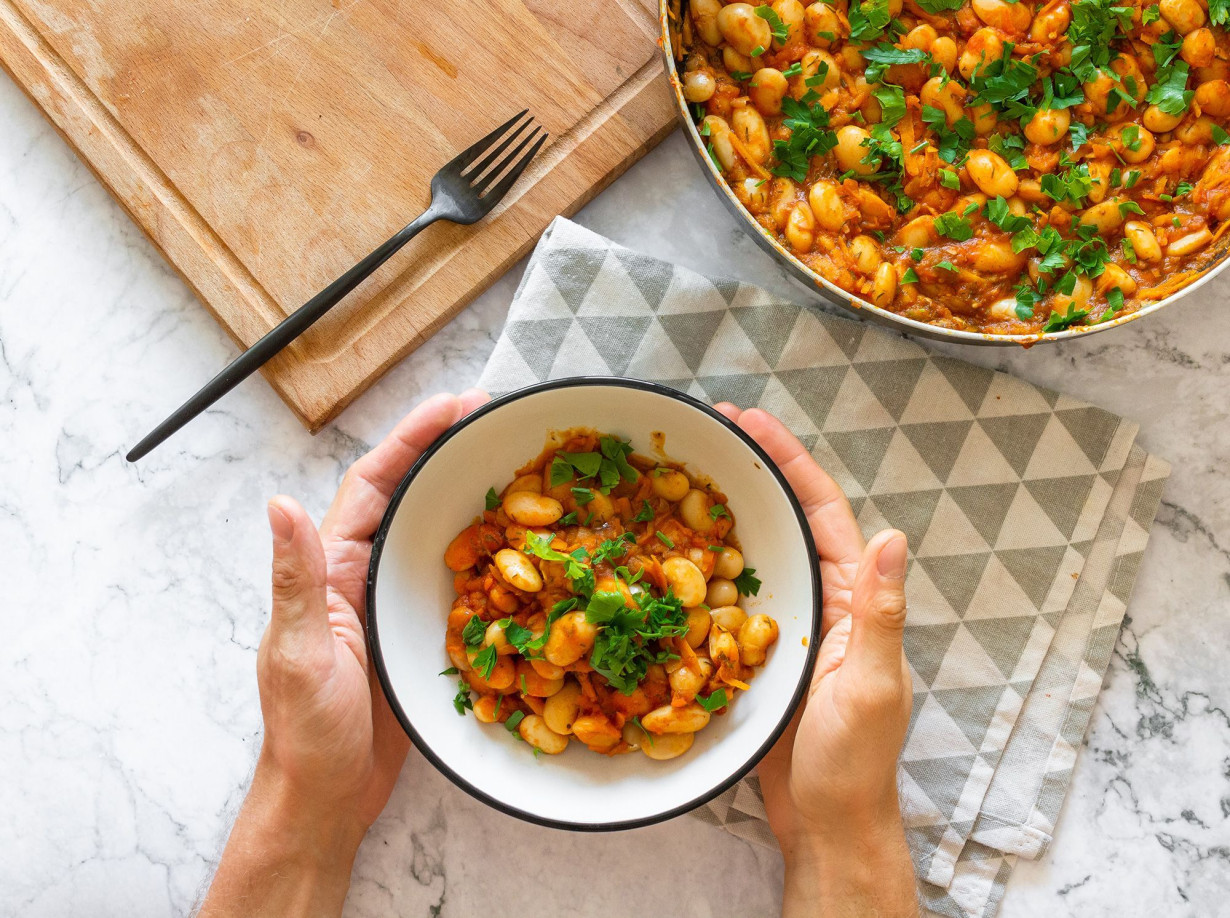(CNN) — Editor’s note: The podcast Chasing Life With Dr. Sanjay Gupta explores the medical science behind some of life’s mysteries big and small. You can listen to episodes here.
Americans are in the middle of a love-affair with protein.
A stroll through almost any major supermarket — where food labels tout grams of protein — bears witness to the trend.
And why shouldn’t we be? Along with carbohydrates and fat, protein is one of the three main macronutrients that make up our diet. Furthermore, it is the only macronutrient that supplies us with amino acids, making it essential for survival.
Amino acids have a hand in many bodily processes, such as building and preserving muscle, making hormones and neurotransmitters, boosting the immune system, even maintaining healthy skin, hair and nails. And while our bodies can make some of the needed amino acids, it can’t make them all. Enter dietary protein.
What is the optimal amount you should be getting? The answer is that it’s complicated.
The US recommended dietary allowance (RDA) of protein for adults 18 and older is 0.8 grams per kilogram of body weight (or 0.36 grams per pound) per day, which translates to about 54 grams of protein for a 150-pound person, or 72 grams for someone weighing 200 pounds. Established jointly by the US Department of Agriculture and the US Department of Health and Human Services, the RDA represents the minimum amount of protein that must be eaten by a relatively sedentary person to meet the basic needs of their body.
There’s also something called the acceptable macronutrient distribution range (AMDR), which was developed by the National Academies of Sciences, Engineering, and Medicine to establish ranges for carbohydrates, fat and protein that are associated with a reduced risk of chronic diseases. Those guidelines, which put intake within the context of an entire diet, recommend protein make up between 10% and 35% of the calories in an adult’s diet. (The number of calories per day an adult should be getting depends on characteristics such as age, sex, weight and activity level.)
All that is to say, there is no exact number for the amount of protein that you should be getting. If you look at the statistics, most people in the United States are getting more than enough; if you listen to some influencers, you are not getting enough.
“I was in L.A., and I did some interviews there, and nine out of 10 people I asked, ‘What did you have for breakfast?’ — it was raw eggs or protein bars or protein smoothies. It was amazing,” Dr. Tim Spector told CNN Chief Medical Correspondent Dr. Sanjay Gupta recently, on his podcast Chasing Life. Spector is a genetic epidemiologist and researcher at King’s College London and founder of one of the world’s largest twins registries, TWINS UK.
“They’ve been sort of brainwashed into thinking that they have to move on to protein because they’re somehow deficient and they’re not going to be lean and have a six-pack and be running marathons (if they don’t),” he said. Spector is also author of several best-selling books including “Food for Life: The New Science of Eating Well.” (He’s also a co-founder of ZOE, a personalized nutrition app).
You can listen to the full episode here.
Spector has nothing at all against protein per se. “In general, protein is pretty good, particularly if it’s plant protein — but, nothing wrong with meat protein in moderation. But it’s what it replaces,” he said. “We need to start thinking much more holistically.”
“Studies have shown that Americans have more than enough protein,” he added. “There might be a few exceptions out there, but most people are already on twice the amount, and yet 90% of Americans are deficient in fiber.”
Spector said certain groups may require a bit more protein: older adults, people going through menopause or recovering from serious illness, those with restrictive diets and people who are “training incredibly hard.” But the rest of us — in the United States, at least — do just fine. (Many people in developing countries do not get adequate protein.)
If you find that you need it, how can you get some additional high-quality protein into your diet — while benefiting from other important nutrients and without relying on highly processed sweetened powders and snack bars? Here are Spector’s top five tips.
Beans are loaded with nutrients
“They come in many forms — black, pinto, broad, kidney, and more — but they never get the attention they deserve,” said Spector via email.
“They’re all good sources of healthy plant protein,” he noted.
Beans are also loaded with other good-for-you nutrients. “Importantly, they also contain fiber (a nutrient that most people really are deficient in), and other healthy plant compounds, like polyphenols,” he said.
Load up on the three-bean salad or bean burrito. Those beans are inexpensive, come in a wide variety and, if you buy them dried, are extremely shelf-stable.
Go whole hog on whole grains
Hearty and versatile, whole grains — such as barley, brown rice, buckwheat, bulgur, corn, millet, oats, quinoa, rye and whole wheat — contain the entire grain kernel, including the bran, germ and endosperm.
“Whole grains are good for a wide range of reasons,” said Spector via email. “They are a great source of fiber and include a wide range of micronutrients. They’re also much higher in protein than people expect. For instance, oats have 11g of protein per 100g compared with 13g per 100g for eggs.”
“Regularly consuming whole grains is associated with a reduced risk of many health conditions, such as heart disease and type 2 diabetes,” he noted.
An easy way to get more in your diet? “Swap products that contain highly refined grains — like white rice, pasta, and bread — for whole grain versions, such as brown rice, wholewheat pasta, and wholewheat bread,” he said.
Replace some meat with plant-based alternatives
Many of us love a good burger or steak, but eating too much of a good thing is not so good for you.
“It’s true that meat is a great source of protein,” Spector said. “However, for your health and the health of the planet, it’s best to reduce your meat intake, particularly red and processed meat.”
“Some people worry that most plants are not complete proteins, so they might be missing out on specific amino acids,” he noted. “But each plant source of protein has a unique amino acid profile. By consuming a wide variety of plants, you will naturally take in all the amino acids you need.”
And don’t panic. Nobody is saying you have to cut out meat entirely. “Consider replacing half of the meat in your stews, chilis, or soups with mixed lentils and beans, tofu, or tempeh, or have one or two vegetarian or pescetarian days each week,” he said.
When you do eat meat, Spector added, “try to choose good quality products and opt for leaner cuts.”
Go nuts over nuts and seeds
“Many people avoid nuts and seeds because they’re relatively high in fat,” Spector said. “Although this is true, they contain healthy unsaturated fats, like monounsaturated and polyunsaturated fats, which support good health.”
It may come as no surprise to find “they’re also a good source of healthy plant protein and a wide range of vitamins and minerals,” he said.
If you are not a fan of munching on straight-up nuts or seeds, Spector said you can sprinkle them on most dishes “savory or sweet — to provide extra texture and flavor.” Consider adding them to your yogurt parfait, salad or stew.
Peanut butter is also a good choice, he said, “but find a product with as few ingredients as possible, and no added sugar or salt.”
The joy of soy
“Soy is one of the few complete proteins in the plant world,” Spector said. “It’s also incredibly versatile and can easily be incorporated into meals. Consider adding tofu, tempeh or edamame to the dishes you already love.”
As an added bonus, he said, “soy products contain fiber and are rich in vitamins and minerals.”
When it comes to protein, Spector said most people should seek out quality over quantity. “Focus on plants, and ignore products that claim to be high in protein, because they’re probably also high in salt, sugar, and other additives your body doesn’t need,” he said.
We hope these five tips help you add healthy protein to your diet. Listen to the full episode here. And join us next week for a new episode of the Chasing Life podcast.
The-CNN-Wire
™ & © 2025 Cable News Network, Inc., a Warner Bros. Discovery Company. All rights reserved.

 Trump has begun another trade war. Here's a timeline of how we got here
Trump has begun another trade war. Here's a timeline of how we got here
 Canada's leader laments lost friendship with US in town that sheltered stranded Americans after 9/11
Canada's leader laments lost friendship with US in town that sheltered stranded Americans after 9/11
 Chinese EV giant BYD's fourth-quarter profit leaps 73%
Chinese EV giant BYD's fourth-quarter profit leaps 73%
 You're an American in another land? Prepare to talk about the why and how of Trump 2.0
You're an American in another land? Prepare to talk about the why and how of Trump 2.0
 Chalk talk: Star power, top teams and No. 5 seeds headline the women's March Madness Sweet 16
Chalk talk: Star power, top teams and No. 5 seeds headline the women's March Madness Sweet 16
 Purdue returns to Sweet 16 with 76-62 win over McNeese in March Madness
Purdue returns to Sweet 16 with 76-62 win over McNeese in March Madness







